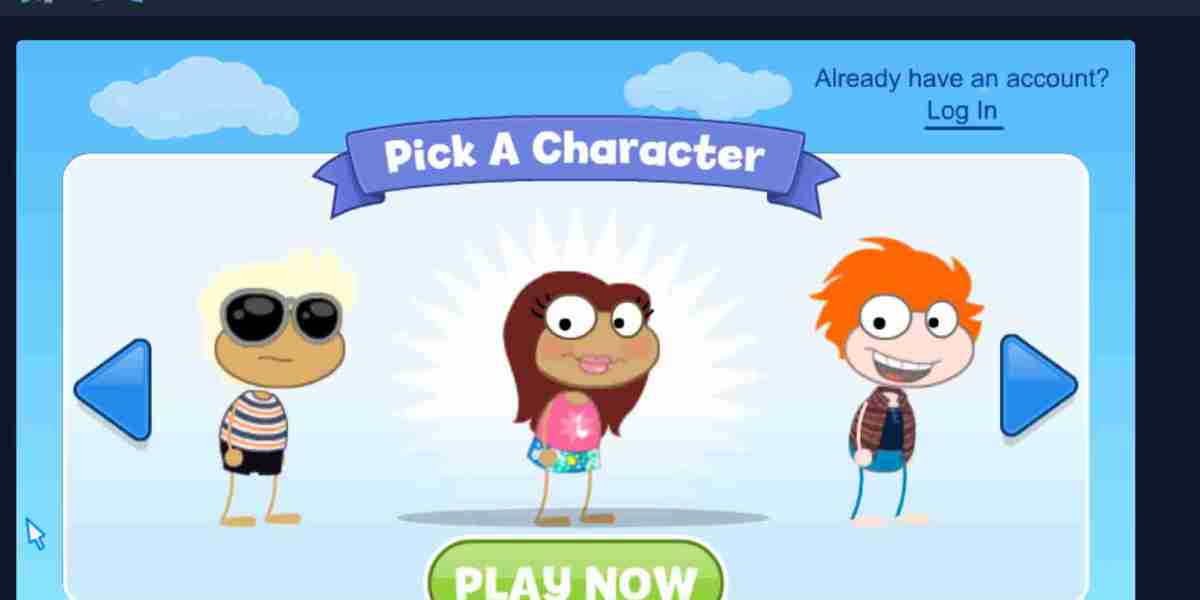The Origins of Poptropica
Poptropica was created by Family Education Network, a subsidiary of Pearson Education. The primary audience was children between the ages of 6 and 15, though many older players also enjoyed the game. Unlike typical online games that focused solely on action or competition, Poptropica blended storytelling, problem-solving, and exploration.
One of the reasons Poptropica gained such immense popularity was its accessibility. It was free to play on web browsers, requiring no downloads, which made it widely available to children around the world. The game was safe, family-friendly, and educational—qualities that reassured parents while still entertaining kids.
Gameplay and Islands
At the heart of Poptropica were its islands. Each island presented a different narrative, setting, and challenge, offering players hours of entertainment. Some of the most memorable islands included:
Early Poptropica Island: The very first island, simple yet engaging, where players helped the villagers recover stolen items.
Time Tangled Island: A history-themed island where players traveled through different time periods to fix the past.
Spy Island: A thrilling adventure filled with secret agents, gadgets, and sneaky missions.
Mythology Island: Inspired by Greek mythology, featuring gods, monsters, and epic quests.
Cryptids Island: A mystery-based island where players investigated legendary creatures like Bigfoot and the Loch Ness Monster.
Each island was unique and designed like a mini-adventure game. Players had to talk to characters, solve puzzles, collect items, and overcome obstacles. The islands not only entertained but also introduced players to history, literature, mythology, and science in creative ways.
The Role of Customization
Another reason Poptropica resonated with players was the level of customization. Players created their own avatars, choosing hairstyles, clothing, and accessories. Throughout the game, players could collect costumes and mix different outfits, allowing for creativity and self-expression. This feature added a personal touch, making the gaming experience feel unique for every player.
Educational Value
Unlike many other online games of its time, Poptropica was both fun and educational. Many islands were designed to subtly teach players about important topics:
Historical Learning: Time Tangled Island introduced kids to different eras in history.
Cultural Education: Mythology Island helped players understand ancient Greek myths.
Problem-Solving Skills: Each island required logical thinking, puzzle-solving, and decision-making.
Reading and Comprehension: Since much of the gameplay involved reading dialogue and instructions, it helped improve literacy skills.
Teachers and parents often praised Poptropica for blending entertainment with education, making it a safe and enriching pastime.
Community and Social Elements
While Poptropica was not primarily a multiplayer game, it offered limited social interaction through "Multiplayer Rooms." Here, players could meet others, chat using pre-selected phrases, and play mini-games. Unlike open chat systems that raised safety concerns, this controlled form of communication made the platform child-friendly while still allowing a sense of community.
Additionally, the Daily Pop feature gave players sneak peeks, news updates, and comics, keeping the game engaging and fresh.
The Transition to Mobile
As technology advanced and browser-based games began to decline, Poptropica adapted. The game was eventually released as a mobile app, allowing a new generation of players to explore the islands on smartphones and tablets. However, the shift from the original Flash-based version to mobile was met with mixed reactions. Many longtime fans missed the charm of the classic islands, some of which were not available in the mobile version.
Nostalgia and Cultural Impact
For those who grew up with Poptropica, the game holds strong nostalgic value. It represents a simpler era of the internet, when games were fun, imaginative, and accessible to everyone without microtransactions or aggressive advertisements.
Poptropica also influenced pop culture. It was referenced in schools, fan communities, and even inspired artwork and online discussions. To this day, dedicated fans create blogs, YouTube videos, and forums discussing their favorite islands and sharing memories of the game.
Challenges and Decline
Despite its success, Poptropica faced challenges as gaming trends shifted. The decline of Flash technology, the rise of mobile gaming, and the competition from more advanced games made it harder for Poptropica to maintain its original popularity. While still available, the game no longer holds the same global influence it once did.
However, the developers continue to maintain and update the game, preserving it as a nostalgic treasure while trying to adapt to modern platforms.
The Legacy of Poptropica
The lasting legacy of Poptropica lies in its ability to blend fun with learning. For millions of children, it was their first introduction to online gaming, storytelling, and problem-solving. Unlike many games, it prioritized creativity and exploration over competition, making it unique in the gaming world.
Even today, adults who grew up with Poptropica often revisit it for a sense of nostalgia. It remains a symbol of internet culture and childhood memories, proving that simple yet imaginative games can leave a lasting impact.
Conclusion
Poptropica was more than just a browser game; it was a world of adventure, mystery, and imagination. From solving puzzles on Time Tangled Island to battling mythological gods, players experienced journeys that were both entertaining and educational. Though the game may not hold the same influence today, its impact on internet culture and childhood gaming remains undeniable.
Whether you were a devoted player who explored every island or someone who only visited occasionally, Poptropica represents a shared piece of nostalgia for an entire generation. Its colorful world, creative storytelling, and educational value make it a true classic in the history of online games.






